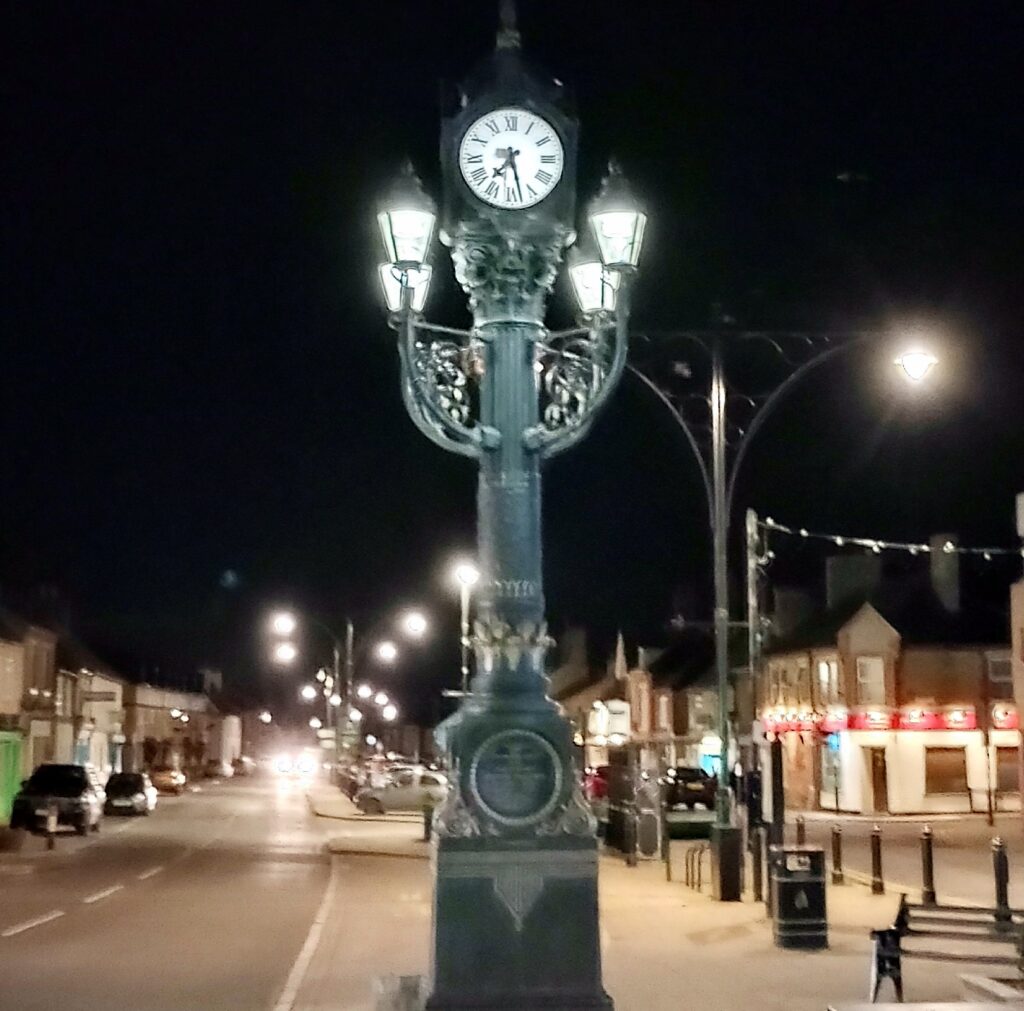Memorial Clock


The Memorial Clock Great Whyte
“Erected in 1888 as a memorial to the Rt Honorable Edward Fellowes, 1st Baron de Ramsey by his Widow and the people of Ramsey”.
The words above are printed in the inscription roundel at the base of the clock. Click this link to see more.
The Clock was manufactured by Macfarlane & Co of Glasgow, who in the 1800s was a large Engineering Company specialising in cast iron work. The clock mechanism was at one time driven by the river flowing underneath, but it became unreliable and was changed to electric power in the 1900’s. I have just recently been in touch with a Mr Gary Nisbet who runs an excellent website called “The Glasgow City of Sculpture Website”
He has been trying to help me trace the clock details. Unfortunately the foundry’s day-to-day order books have not survived and these would have given us the details of the ordering of such things. However copies of the beautifully illustrated Macfarlane Catalogues are kept at the City of Glasgow Archives, these helped commissioning groups to select the designs they wished to order, and to mix and match different elements they preferred to make up the finished article. Which in Ramsey was the Clock we now see.
The clock is made up of different elements as mentioned before, there is the Clock housing, the lamp brackets, lamps, corinthian column, pedestal. Not all of these are in the catalogues! All the elements of the clock listed have pattern numbers and would have been used to make molds in sand. Then molten cast iron would have been poured into the mold to make the part.
In the Macfarlane catalogues, some of the parts used for the Ramsey clock tower are illustrated and some are not. Unfortunately the clock section, the column and the part incorporating the inscription roundel are not.
The pedestal is listed as pattern numbers 12 or 13 (the former being 2ft wide, the latter 3ft wide). The lamp brackets are number 39, and the lanterns appear to be number 229 (if they are original). The Corinthian capital appears to be number 174 or 189, depending on its size (174 being smaller than 189). This is all the information that the catalogues impart.
The facts above are currently all I can find out about the Clock. I will add to this page when and if more details come to light.